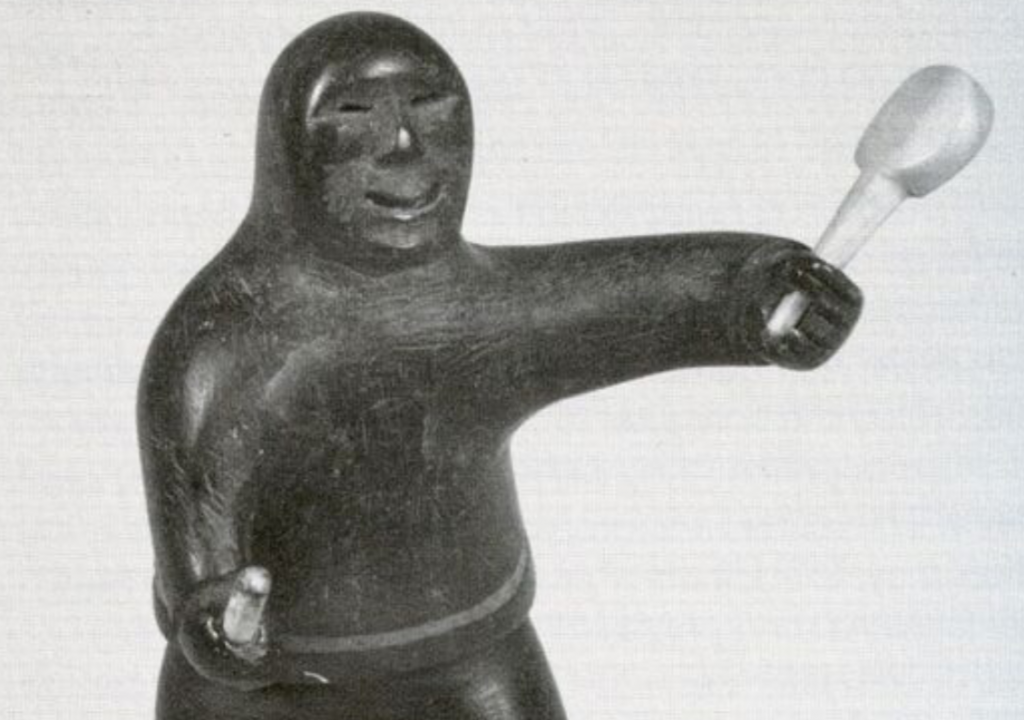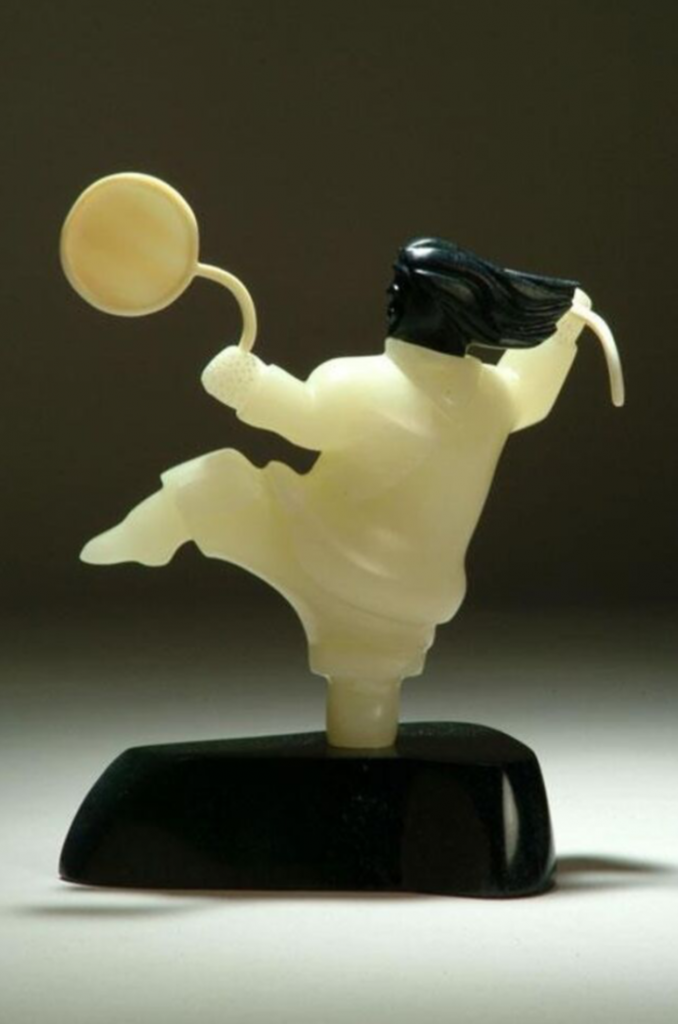Inuit have been drumming for a very long time. It is hard to say when drumming was introduced to the Inuit culture, but some drum fragments in Greenland have been found dating from 4,500 years ago. The oldest drum pieces found in Canada were over 1,000 years old and were found on Bylot Island in Nunavut. Traditionally, drumming was done by men mostly to celebrate occasions like a young boy’s first hunt or the birth of a child. But in some Nunavut communities, women and children were drum dancing, as well.

“Some are so good in their motions that they move back and forth gracefully.”
Luke Arna’naaq, 1987
Traditionally, drums were made of wood that was soaked in water for a long time to be bent by the drum maker’s knees, hands and jaw. The cover of the drum was mainly caribou skin taken from specific caribous at specific seasons to get very thin skin. This caribou skin was then soaked in water to take allthe hair off and then dried. It was very important forthe caribou skin to be intact without any holes in it. The drum beater was made from wood, antlers or part of sea mammals and wrapped with animal skin (caribou, seal or other). The rope around the drum was braided by women using sinew. This kind of drum had to be taken apart when the drum dance was done. The caribou skin was taken off, rolled up and properly stored until the next drum dance.

Nowadays, Inuit drums are made from wood and synthetic fabrics such as nylon (material used to make rainproof parkas). People can buy these fabrics at the store, along with the rope to wrap around the drum. This way of doing is much faster and the drums last much longer. The cover does not have to be taken off to be stored properly.
Drum dancing also comes with some unique dance movements such as a knee- bending motion and moving around in a circle. Some drum dancers also make a noise that is called utterance. This utterance can be an indication of the drummer’s excitement and happiness. Some Inuit drummers will also write their own song to go along with their drumming. Most of these songs are of a special journey out on the land. Some songs can be passed on by parents or by parents of by sauniks (namesakes).
Although Inuit drums do not seem to have made their way to Nunavik in the past, many artists are bringing the drums into the Nunavik communities nowadays. We can also find many artists’ carvings or prints that include the Inuit drum as an element of their culture.
